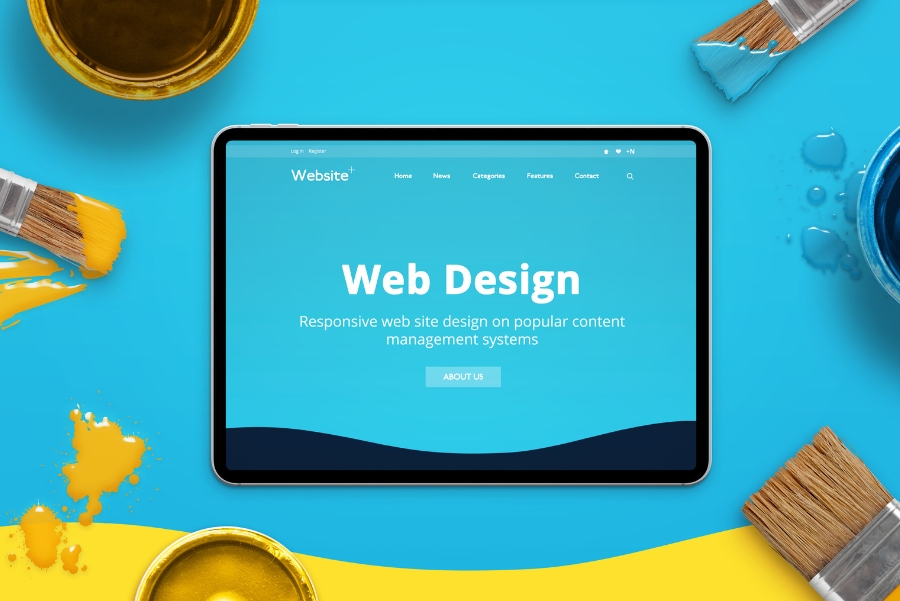Typography and Readability in Web Design

The user experience is greatly influenced by web design in the constantly changing digital world. Typography is one of the many components that go into creating a website that is both aesthetically pleasing and useful. It involves the skill and practice of placing typefaces to produce information that is both meaningful and readable.
Effective typography can dramatically improve a website’s readability and overall user experience. In this blog, we’ll examine the value of typography and readability in web design and look at some best practices for making websites that are both aesthetically pleasing and user-friendly.
Importance of Typography in Web Design
- Create Visual Hierarchy:Typography plays a significant role in establishing visual hierarchy on a web page. Web designers can direct the user’s eye to focus on important aspects like headers, subheadings, and content by utilising a variety of font sizes, weights, and styles. This makes it easier for consumers to access pertinent information and comprehend the organisation of the content.
- Typography as a Reflector of Brand Identity:A brand’s visual identity is not complete without typography. An effective and enduring brand identity can be developed by consistently using fonts that reflect the personality and values of the company. Choosing the right typeface can elicit feelings, build credibility, and strengthen relationships with the target audience.
- Improving Readability:Web visitors sometimes skim text rather than reading it word for word. Well-selected typefaces and appropriate formatting improve readability, making it simpler for consumers to rapidly understand the information. Reduced cognitive burden and increased user engagement are two benefits of legible typography.
- Supporting Accessibility:A crucial component of web design is accessibility. For people with visual impairments or reading challenges, a website’s accessibility can be improved by using the right fonts, sizes, and spacing. Making sure the website is highly accessible makes it inclusive and user-friendly for all visitors.
Best Practices for Typography and Readability in Web Design
- Font selection:Pick typefaces that are consistent with the brand identity and purpose of the website. For a neat and coordinated aesthetic, stick with two or three font families. Consider using more ornamental fonts sparingly for headings or accents and easily readable fonts for body text.
- Font Size and Line Spacing:Good reading depends on good font size and line spacing. The body text should be readable without having to zoom in on a variety of devices. Users can read text more easily when there is sufficient line spacing to keep it from becoming crowded.
- Colour and Contrast:To make the material easy to read, make sure there is enough contrast between the text and the background. Generally speaking, light writing on a dark backdrop or vice versa works nicely. Refrain from employing low contrast colour schemes that are hard on the eyes.
- Device responsive:Design websites with responsive typography so that it can adjust to various screen widths. Use fluid font sizing to ensure the best reading experience on desktop and mobile devices by adjusting the font size based on the user’s device.
- Reduce Typeface Variations:Using too many typefaces might clutter the screen and cause people to become distracted. Use a small selection of fonts, and to provide variety within those fonts, experiment with weights and styles.
- Pay Attention to Line Length:The ideal line length is anywhere between 50 and 75 characters. Long lines might make it challenging for consumers to keep their attention on the material, while short lines can encourage excessive scrolling.
- Utilise White Space:Text blocks with plenty of white space around them are easier to read and allow the material to breathe. White space also aids in maintaining user focus on the page’s most important components.
- Test Readability:Before finalising the typography, conduct readability tests with different user groups to ensure that the chosen fonts and styles resonate well with the target audience.
An online store that sells high-end fashion items to smart and fashion-conscious customers. The brand’s visual identity is centred on minimalism, luxury, and grace. In this situation, typography is essential for enhancing the brand’s individuality and successfully attracting the target audience.
An elegant and contemporary sans-serif font for the body text and a classy serif font for the headings and subheadings are carefully chosen by the site designer as complementing typefaces. The serif font gives the brand a sense of sophistication and class, while the sans-serif font offers easy readability and easy navigation throughout the website.
Different font weights and sizes are used by the designer to preserve visual hierarchy. A bold variation of the serif font is used in the headlines to draw the user’s attention and direct them to important sections like product categories and specials. Subheadings are distinguished from headers yet keep their significance by using a slightly lighter weight.
To ensure pleasant reading on multiple devices, the designer chooses a legible font size with sufficient line spacing for the body content. High contrast between the light background and black text improves readability and creates a smooth reading experience.
The website also uses responsive typography to make sure the fonts adapt seamlessly to various screen sizes, including those on computers and mobile devices. This responsiveness strengthens the brand’s dedication to user-centric design by enabling them to maintain a consistent and interesting experience across all devices.
The e-commerce website is successful in giving its target audience an immersive and visually attractive experience by adhering to best practices in typography and matching it with the brand’s branding. The expert use of font promotes a feeling of exclusivity, elegance, and trust that aligns with the brand’s core principles and draws devoted customers who value quality and design.
Concluding Thoughts
As a result, typography in web design is an art and a science that affects more than just looks; it also affects how consumers interact with websites. To provide the best possible user experience, web designers must constantly modify their approach to typography in light of the rapid technological advancement and changing expectations of users. Designers may produce websites that attract users visually and engage them with easily readable content by fusing creativity and usability.
Maintaining a current understanding of new typographic trends and best practices is crucial as the digital landscape develops. Web designers can leverage the power of typography to create memorable online experiences that connect with audiences around the world by emphasising readability, accessibility, and brand consistency. Typography is a flexible and dynamic tool that allows designers to bring their imaginative concepts to life and enhances the usability and engagement of the web for all users.





